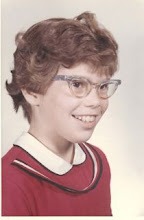Please welcome guest blogger, Justin Stygles! Justin is a grade 5/6 ELA/humanities teacher in a rural New England community where he has taught for eleven years. He also spends his summer working at a daycare in Windham, ME. He is a National Board Certified teacher candidate and an occasional blog contributor to the Nerdy Book Club. His educational passions are writing about the classroom and exploring new methods to encourage students to read and write. He adamantly believes that success in and outside of the classroom is not possible without his students and he thanks everyone of them, current, past, and future. Justin collaborates with teachers in the Maine Reading Association, IRA, and NCTE.
In our
class, reading and books are meant to assist boys acquire a sense of self. That can be as privately or as publicly as
they want it to be. Boys require nurturing in this area, more so than most
people give credit to. Boy readers, especially the struggling reader, will do
everything he can to disguise his reading values, abilities, and comprehension,
if there is any inkling he will be deemed inferior, wrong, or excluded.
Protection of bravado and image (self) is very important. This year we devised
a class motto to give boys, and all students, a sense of security, whether
reading or any other subject: "Take a risk. Read a book you didn't think you'd
be interested in or write something that will amaze the world.” With this motto, students support each other's risks and inquire about each other's reading.
I have a
boy this year who loved listening to Hattie Big Sky - listening, where
a student follows along in a text as a CD plays (reading for the auditory
learner) – in fifth grade. Mandated reading assessments SUGGESTED he is a third
grade reader at the footstep of sixth grade. He came to class horrified because
in “Mr. Stygles's class” you have to read 40 books. He was sure he hadn't read that many books
from grades 3-5 and presumed his reading death from the start.
His
preconceived notion of self, verified by continuous assessment and repeated
intervention attempts, allowed him to believe that he would fail as a reader,
no matter what. Fast forward four weeks into school: he has already completed three books --Love that Dog and Hate That Cat by Sharon Creech, and How to Eat Fried Worms, by Thomas Rockwell -- and, based on classmates' recommendations, is now reading Granny Torrelli Makes Soup. Not bad for a “third grade reader” who hated reading. (Did he hate reading or did he hate who he
thought he was as a reader?) Oh! He
can't wait to listen and follow along with Hattie Ever After. He is
well on his way to 40 books.
Implicit in
the aforementioned example is that a boy likes a “girls'” book. For many boys, because covers still sell
books, Hattie Big Sky is a girls' book. Sure, the main character is a
girl, but in the entire story, Hattie could easily have existed as a boy.
Last year, boys faced a female protagonist in
our final read aloud of the year, yet not one boy (of 65 students total)
objected to Juniper Berry, by M.P. Kozlowsky, where the main character is a girl, who,
commonly enough, fell in love with a boy named Giles. The boys liked this book
because of the relationship, as friends, between Juniper and Giles and the strong
“save the family” element. This is important since so many intermediate level
books contain a boy and girl pairing to overcome a common challenge. Boys like
this kind of material and want to feel comfortable reading such content. In
class we try to break from the norm and allow boys to enjoy drippy or gushy, or
as they would say “awkward,” books.
Truthfully,
the boys couldn't wait to see how Juniper would deal with Skeskyl, nor could they
wait to see what would become of Juniper and Giles, perfectly natural ambitions
of boys or girls. In fact, the whole
adventure ties right into what boys dig about reading. They loved this book which might have been ignored based on preconceived notions.
In the end,
boys want to find a sense of self in reading. To do this, they need to have
positive reading experiences and associate with characters. That is why, when my boys burst out in tears
one page 137 of The Boy On the Porch by Sharon Creech last week, in a
class read aloud, we clapped for him. He
took a risk, fell in love with a book and he fell in love with reading.
Thank you so much, Justin, for this poignant reminder not to judge a book by its cover -- or a reader by his (or her!) gender! I will never forget your comment about that young man hating who he was as a reader, rather than hating reading. My heart breaks that we adults might have done something like that to a young person.
If you want to hear more of Justin's thoughts about connecting kids and books, you can follow him on Twitter: @JustinStygles.







No comments:
Post a Comment